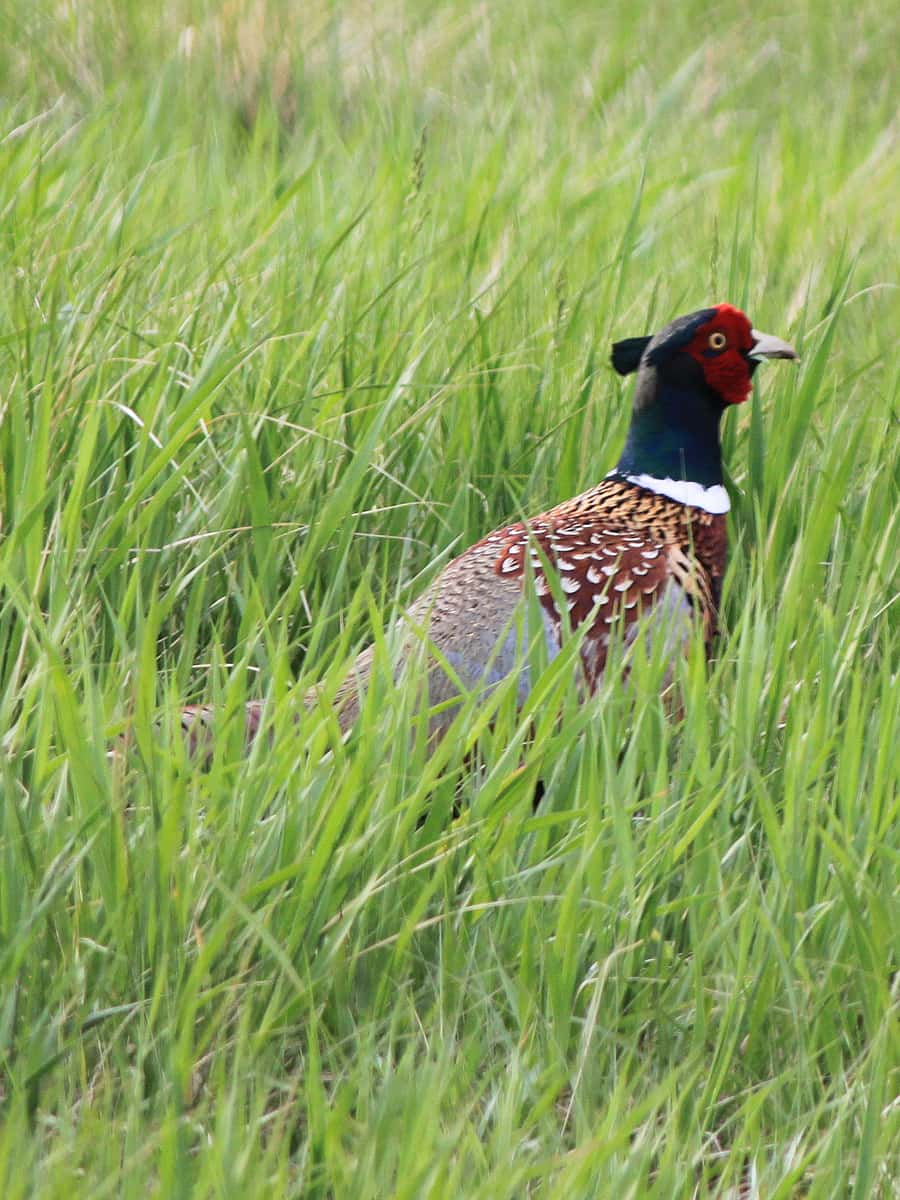
A rooster pheasant loafs in the greening grass around a small slough near Bismarck. The prairie pothole region sports many small lowlands and sloughs that will benefit from PF’s private land precision agriculture initiative with Purina, helping to sustain populations of waterfowl, upland birds, watchable wildlife and big game. Simonson Photo.
By Nick Simonson
Pheasants Forever (PF) and pet food producer Purina have partnered on an ambitious three-year, 30,000-acre incentive program directed at landowners in the prairie pothole region of southwestern Minnesota, north-central Iowa, and those parts of North Dakota and South Dakota located east of the Missouri River.
With the ultimate goal of adding more than 7,200 acres of wildlife habitat in the region known for rearing a large portion of the nation’s waterfowl populations, the program will analyze the precision agriculture data on those farmers employing the modern tactic and help identify areas of marginal land which can be converted to wildlife habitat and those spaces that may be more suitable to raising cover crops which would benefit both ducks and upland species.
“It’s a unique program for PF in that it’s a program that is multi-state and it’s being run by Pheasants Forever,” said Rachel Bush, ND PF State Coordinator, “the program is focused on the prairie pothole region of ND, SD, MN and IA and we’re really looking to focus in using precision data to help growers identify those areas that are least productive, that are more marginal lands and find conservation solutions for those acres,” she added, stating that operators can earn an incentive for signing up with the program that creates habitat and provides soil and water benefits.
Sign-up for the program has been open since May 1 and runs until June 30. Landowners looking to enroll in the program are advised that they must have at least one year of precision agriculture data for their acres through the John Deere Operations Center, Climate Field View or other precision agriculture platform. The provision of that information and the analysis of the plat will help PF precision ag specialists and their partners at TruTerra, LLC analyze the options for cover crops and perennial cover planting for areas of habitat. The implementation of these options will help further PF’s mission of creating more habitat for upland game, waterfowl, songbirds and pollinators and assist Purina in furthering its sustainability goals.
“With the perennial cover, that will obviously provide a ton of great benefits for wildlife habitat, especially pheasants,” said Emily Spolyar, ND PF Precision Ag & Conservation Specialist, “growers can sign up to 100 acres for cover crop, so that will again provide a lot of great benefits with soil health,” she continued, touting the limited cover crop option under the program as a doorway into exploring sustainable plantings on other areas of a producer’s primary croplands.
Purina’s involvement in this program, beyond a donation of $1 million, highlights top-level involvement by a company in such an ambitious plan, where normally partnerships involve government agencies at the federal state and local level. According to Bush, this represents the evolution of the organization’s partnership with Purina, which relies on U.S. agriculture for the ingredients in the company’s pet food products and helps set the example for sustainability efforts by other businesses throughout the country.
Landowners looking to advance their use of precision agriculture tactics and participate in the program can do so by signing up at pheasantsforever.org/soilhealthandhabitat, or by contacting their local PF representative.
A one-time sign-up incentive is available to operators in North Dakota and South Dakota in the amount of $150 per acre. For more information on the Soil Health and Habitat program in North Dakota, contact Rachel Bush at rbush@pheasantsforever.org; and in South Dakota contact Matt Morlock at mmorlock@pheasantsforever.org.

